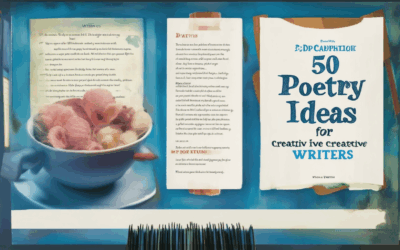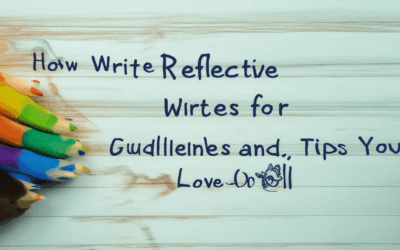In today’s digital age, storytelling remains a cornerstone of human connection, inspiration, and engagement. Whether you’re crafting a novel, writing blogs, or sharing personal experiences, mastering storytelling is essential for capturing hearts and minds. This guide delves into the art of crafting compelling narratives, offering practical advice and strategies to help writers of all levels refine their craft. From understanding the fundamental elements of storytelling to exploring advanced techniques, we’ll cover everything you need to know to create stories that resonate deeply with your audience. With a focus on clarity, creativity, and impact, this ultimate guide will equip you with the tools to tell stories that inspire, educate, and entertain. Let’s embark on a journey to master the art of storytelling and unlock the full potential of your writing.
Key Takeaways
– The Four P’s of Storytelling: Craft compelling narratives by mastering Plot, Protagonist, Perspective, and Purpose.
– The Five Stages of Storytelling: Navigate through Exposition, Rising Action, Climax, Falling Action, and Resolution to build a complete and engaging story.
– The Three Pillars of Storytelling: Structure, Meaning, and Emotion are the cornerstones of creating impactful and resonant narratives.
– Elevate your storytelling skills with expert tips and resources from Silken Drum.

What Are the 5 Cs of Storytelling?
The 5 Cs of storytelling are essential elements that help create engaging and memorable narratives. These components work together to captivate audiences and effectively communicate messages.
- Character : Develop well-defined characters who drive the story forward. They should have distinct personalities, motivations, and arcs that evolve throughout the narrative.
- Context : Establish a clear setting, time period, and cultural background to ground the story in reality. This helps readers connect with the story on a personal level.
- Conflict : Introduce a central problem or challenge that the protagonist must overcome. This creates tension and keeps the story moving forward.
- Climax : Build up to a pivotal moment or turning point where the outcome is uncertain. This heightens the stakes and keeps the audience engaged.
- Closure : Conclude the story satisfactorily, whether through resolution, open endings, or unexpected twists. This leaves the audience with a lasting impression.
By mastering these elements, storytellers can craft compelling tales that resonate with their audience.
What are the 5 P’s of storytelling?
The 5 P’s of storytelling are a fundamental framework used to create engaging and memorable narratives. These elements work together to captivate audiences and leave a lasting impression. Here’s a breakdown of each component:
People
People are the heart of any story. Relatable and well-developed characters drive engagement. Whether it’s a protagonist overcoming challenges or a cast of supporting characters enriching the plot, focusing on people allows readers to connect emotionally. Learn more about character development on our storytelling guide .
Place
Setting plays a crucial role in grounding the story. Whether it’s a bustling city, a serene forest, or a futuristic galaxy, the location shapes the narrative’s tone and atmosphere. A well-defined place helps readers immerse themselves in the world being created Explore how settings influence storytelling on our creative writing hub .
Pictures
Visual elements, whether through descriptions or imagery, bring stories to life. This includes everything from vivid scene painting to symbolic representations. Strong visuals help convey emotions and ideas, making the story more tangible Discover tips for using pictures in storytelling on our resource page .
Personalization
Tailoring the story to individual preferences enhances its impact. Personalized elements can range from custom names and backgrounds to specific cultural references. This approach makes stories feel unique and tailored to the audience Find out how personalization can elevate storytelling on our blog .
Peril
Conflict or danger adds tension and keeps the story moving forward. Whether it’s an external threat or an internal struggle, peril drives character growth and plot progression. A well-crafted peril scenario creates suspense and maintains the reader’s interest Learn about crafting effective peril in our storytelling techniques guide .

Improving Storytelling in Writing
To enhance your storytelling abilities, consider the following structured approach:
- Consistent Practice: Establish a daily writing routine, dedicating even 15 minutes to crafting something, whether it’s a short scene or a paragraph.
- Diverse Reading:** Expand your horizons by exploring various genres and styles. Analyze how different authors structure their narratives and incorporate these techniques into your own writing.
- Show, Don’t Tell:** Use descriptive language to immerse the reader in the story. Incorporate sensory details to allow readers to visualize, hear, and smell the scenes, rather than merely stating events.
- Develop Complex Characters:** Create well-rounded protagonists with depth. Assign them flaws and growth arcs to make them relatable and dynamic, allowing readers to connect emotionally.
- Manage Pacing:** Outline your plot structure to ensure each segment advances the story, avoiding rushed sections or unnecessary delays. Practice pacing to maintain a balanced narrative flow.
- Build Immersive Worlds:** Dedicate time to crafting detailed settings that enrich the story. Use prompts or sketches to envision these environments, making them integral to the plot and characters.
- Seek Feedback:** Join writing communities or beta readers to receive honest critiques. Share your work courageously to gain insights and refine your storytelling approach.
- Edit and Revise:** Allocate weekly time for revising your manuscripts. Focus on grammar, sentence structure, and coherence to polish your work effectively.
By systematically addressing each area, you can progressively enhance your storytelling skills, leading to more engaging and compelling narratives. Stay committed, track your progress, and enjoy the evolution of your creative process.

The Four P’s of Storytelling
Storytelling is a powerful art form that relies on several key elements to create an engaging and impactful narrative. Among these elements are the four P’s, a simple yet effective framework for understanding the components of a good story.
- P lot: Every great story has a sequence of events that drive the narrative forward. The plot is the backbone of the story, providing structure and direction.
- P rotagonist: The protagonist is the central character around whom the story revolves. They are often the catalyst for the plot’s development and the source of the story’s conflict.
- P erspective: The point of view from which the story is told greatly influences its tone and depth. Whether it’s first-person, third-person limited, or omniscient, the perspective shapes how the story is experienced.
- P urpose: The purpose of a story extends beyond entertainment; it often conveys a message, explores themes, or evokes emotions. Understanding the author’s intent adds layers to the narrative.
By mastering these four P’s, storytellers can craft narratives that resonate deeply with their audience, whether through books, films, or other forms of media. Each element works synergistically to create a cohesive and memorable story.
What Are the 5 Stages of Storytelling?
The process of storytelling is a complex yet fascinating journey that involves several distinct phases, each contributing to the creation of an engaging narrative. Below is a breakdown of the five primary stages of storytelling:
- Exposition
- The exposition is the foundation of the story, setting the stage for the rest of the narrative. It introduces the setting, characters, and the basic premise of the story. This phase answers questions like “Where is the story taking place?” and “Who are the main characters?”
-
Rising Action
- The rising action is the buildup of the story, where conflicts and challenges begin to emerge. This phase develops the protagonist’s situation, leading them towards the central conflict. It creates suspense and keeps the audience engaged by revealing important events that drive the plot forward.
-
Climax
- The climax is the peak of the story, where the main conflict reaches its highest point of tension. This is often the most dramatic part of the narrative, where the protagonist faces their greatest challenge or makes a critical decision. The climax determines the outcome of the story and leaves a lasting impression on the audience.
-
Falling Action
- After the climax, the falling action sees the resolution of the main conflict. This phase wraps up the story, showing how the protagonist resolves the issues they faced. It may involve a happy ending, a bittersweet closure, or unexpected twists that leave the audience reflecting on the narrative.
-
Resolution
- The resolution brings the story to its conclusion, tying up loose ends and providing closure. It answers any remaining questions the audience might have and reinforces the themes of the story. A well-crafted resolution leaves the audience with a sense of fulfillment or insight.
By mastering these stages, storytellers can craft compelling narratives that captivate audiences and leave a lasting impact. Understanding each phase allows for a deeper appreciation of how stories are constructed and why certain elements are crucial to their success.
Learn more about storytelling techniques and creative writing on Silken Drum.

What Are the Three Pillars of Storytelling?
Storytelling is a powerful art form that captivates audiences and conveys messages effectively. To master it, understanding the three core pillars is essential:
1. Structure
The backbone of any great story lies in its structure. A well-crafted narrative follows a clear beginning, middle, and end, guiding the audience through a journey. This framework ensures coherence and keeps readers engaged. Whether it’s a simple fable or an epic saga, structure provides the necessary framework for storytelling success.
2. Meaning
Meaning is the heart of storytelling. A compelling story transcends mere entertainment; it conveys a deeper message or insight. This could be an exploration of human nature, a moral lesson, or a reflection on societal issues. Meaning gives the story its purpose and allows it to resonate with the audience on a profound level.
3. Emotion
Emotion is what connects stories to their audience on a deeply personal level. Effective storytelling evokes feelings that create a bond between the narrator and the listener. Whether it’s joy, sorrow, fear, or hope, emotions are the currency that makes stories unforgettable.
How Can Writers Improve Their Storytelling?
Silken Drum encourages writers to focus on these pillars to craft compelling narratives. By refining structure, infusing meaning, and leveraging emotion, writers can create stories that captivate and inspire. Explore our resources on writing tools and story writing tips to further enhance your storytelling skills.
Conclusion
Mastering the three pillars of storytelling—structure, meaning, and emotion—is essential for any writer seeking to create impactful narratives. By understanding and applying these principles, you can craft stories that resonate deeply with your audience and leave a lasting impression.




0 Comments